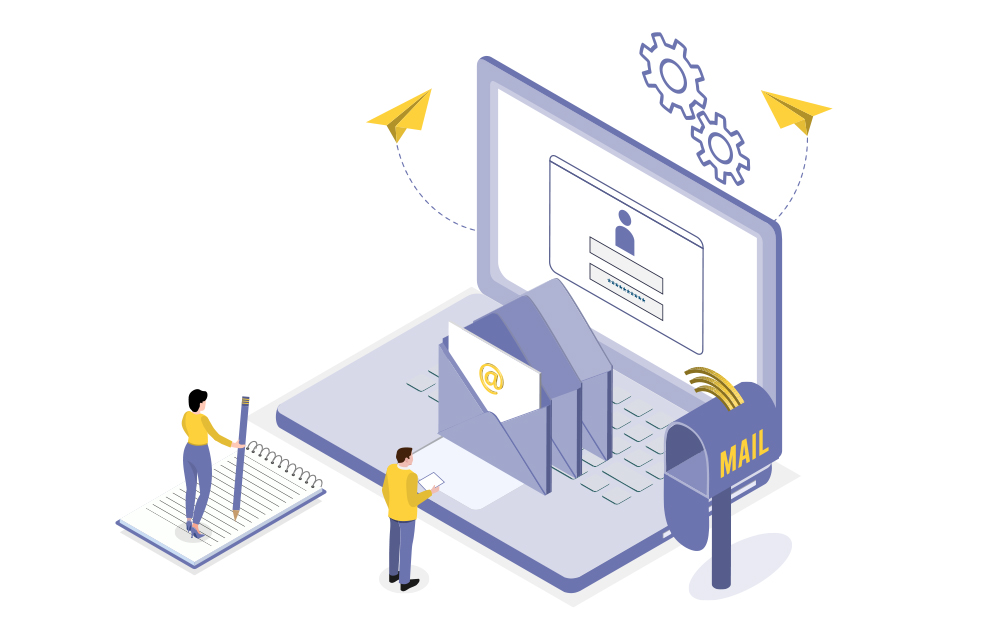Lead generation is a critical part of any successful marketing strategy.
Brickwork Blogs


In today's digital age, email remains an indispensable communication tool for both personal and professional interactions. However, the constant influx of messages can quickly turn your inbox into a chaotic and overwhelming space. If you find yourself drowning in a sea of unread emails, missed deadlines, and important messages buried beneath promotional offers, it's time to master mailbox management.
In this article, we'll explore effective strategies to regain control of your inbox and boost your productivity.
1. Set Clear Email Goals:
Before diving into your inbox, establish clear goals for your email management. Determine what you want to achieve—whether it's responding to client inquiries within a specific timeframe, decluttering your inbox, or categorizing emails for easier access. Setting these goals will guide your approach and help you stay focused on the tasks that matter most.
2. Prioritize and Segment:
Not all emails are created equal. Begin by segmenting your emails into categories such as "Urgent," "Important," and "FYI." This allows you to prioritize messages that require immediate attention, ensuring that critical tasks are addressed promptly. Tools like color-coded labels or flags can visually differentiate emails based on their urgency.
3. Unsubscribe and Filter:
Over time, newsletters, promotions, and spam can flood your inbox, burying essential messages. Take a proactive approach by unsubscribing from irrelevant mailing lists and setting up filters to automatically sort incoming emails. By directing specific types of messages to designated folders, you can keep your primary inbox clutter-free.
4. Use Folders and Labels:
Folders and labels are your allies in maintaining an organized inbox. Create folders that align with your work or personal categories, such as "Work Projects," "Financial," or "Travel." Apply labels or tags to emails based on their content, making it easier to locate specific messages when needed.
5. Adopt the Two-Minute Rule:
The two-minute rule is a simple but effective strategy.
The Two-Minute Rule is a principle often advocated for email management and productivity enhancement. It's a simple but effective strategy that suggests that if an email requires less than two minutes to handle, you should take care of it immediately rather than postponing it or letting it accumulate in your inbox. The idea is to quickly address small tasks to prevent them from piling up and consuming more time later.
Here's how the Two-Minute Rule works:
When an email arrives: When you open an email and realize that the task it requires can be completed in less than two minutes, take immediate action.
Immediate action: Respond, complete the task, or take any necessary steps to resolve the matter mentioned in the email.
Avoid procrastination: By addressing these quick tasks right away, you prevent them from lingering in your inbox and becoming a source of clutter and distraction.
Increase efficiency: The Two-Minute Rule helps you avoid spending time reviewing the same email multiple times or postponing small tasks that could be completed swiftly.
You can handle tasks like - Replying to simple requests or questions, setting up a brief meeting or call, forwarding an email to the appropriate colleague, confirming receipt of a message, completing a quick form or survey, using the Two-Minute Rule.
6. Set Specific Email Times:
Constantly checking your inbox disrupts your workflow and decreases productivity. Instead, designate specific times to check and respond to emails. This might be at the beginning of the day, after lunch, and before signing off. Stick to these dedicated email periods to avoid distractions throughout the day.
7. Archive and Delete:
For emails that no longer require action, consider archiving or deleting them. Archiving keeps important messages accessible without cluttering your main inbox, while deleting irrelevant messages reduces visual noise and frees up storage space. Remember to empty your trash or spam folders regularly to prevent unnecessary buildup.
8. Create Email Templates:
Frequently sending similar responses? Save time by creating email templates for common replies. Whether it's introducing your services to new clients or confirming appointments, templates streamline your communication and maintain consistency in your messaging.
9. Use Keyboard Shortcuts:
Most email platforms offer keyboard shortcuts that streamline navigation and actions. Invest time in learning these shortcuts—it might seem small, but the cumulative time savings add up over the long run, enhancing your overall efficiency.
Here are some rules and tips for more efficient mailbox management:
Use Folders and Labels: Create folders or labels to categorize your emails into different sections like "Work," "Personal," "Important," "To-Do," etc. This helps you quickly locate specific emails.
Set up Filters: Create email filters or rules to automatically sort incoming emails into the appropriate folders or labels. For example, you can filter emails from a specific sender or with certain keywords.
10. Regular Maintenance:
Like any organization task, maintaining an organized inbox requires ongoing effort. Dedicate a few minutes each day to address incoming emails, respond to inquiries, and file messages appropriately. Additionally, schedule a weekly or monthly review to assess your progress, declutter, and adjust your strategies as needed.
11. Mindful Email Etiquette:
Mastering mailbox management goes beyond organization; it also involves practicing mindful email etiquette. Use clear and concise subject lines, address recipients by name, and keep your messages brief yet informative. Respect others' time by getting to the point, and avoid sending unnecessary "reply all" messages.
12. Limit Notifications:
Constant email notifications can be disruptive. Adjust your settings to receive notifications only for high-priority messages. By reducing the frequency of notifications, you can work without interruption and allocate focused time for email management.
13. Delegate When Possible:
If you're part of a team, delegate email responsibilities where appropriate. Shared inboxes, delegation settings, or task management tools can distribute the workload and prevent emails from bottlenecking your productivity.
Mastering mailbox management is a journey that requires discipline, commitment, and a willingness to adopt new habits. By setting clear goals, segmenting emails, utilizing tools and techniques, and practicing efficient communication, you can transform your inbox from a chaotic space into a well-organized hub that supports your productivity and growth. Remember that email management isn't just about decluttering; it's about regaining control over your time and focusing on what truly matters in your personal and professional life.

Also Read: Email Management tips to help you stay organized
How can Brickwork help?
In essence, partnering with Brickwork can transform mailbox management from a time-consuming task to a well-organized, efficient process. By leveraging their skills and expertise, businesses can regain control of their inboxes, enhance productivity, and redirect their focus to core operations that drive growth.


